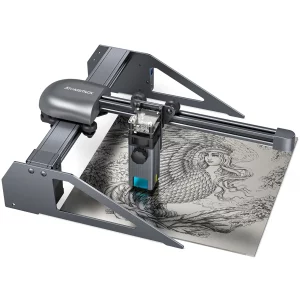Laser Engraving Machine
Some people turn their passion for engraving into a full-time business, and they use laser machines to provide their customers with custom designs and items. They often use the machines for personalization of products, such as trophies or gift items.
A laser engraver uses high-energy density light to remove materials from an object’s surface, and the material leaves behind a pattern raised above the surrounding area (convex) or etched into its surface (concave). Laser machines can work with wood, plastic, glass, metal and other materials. The power and path of the laser beam can be programmed to produce different patterns. The beam is also regulated to prevent overheating of the equipment and the material.

The most common type of laser engraving machine is a CO2 laser, which has a wide range of applications. This is because it can handle a variety of materials and provides excellent precision and accuracy. It can also create complex 3D designs and cut complex shapes from metal. It is a versatile tool that can be used by both professional and home users alike.
Can a Laser Engraving Machine Also Cut Materials?
Another type of laser engraver is an RF laser, which uses radio frequency to generate the laser’s energy. This type of machine can also cut various types of materials and is often used by businesses, as it requires less maintenance than other models. It is also more durable and can handle a higher number of jobs than other models.
Laser machines are often designed to work with specific types of materials, although some can etch on fabric and acrylic. They are able to create intricate designs, and they can also be used to make logos and other branding materials for companies. Some of the more advanced laser machines can even be used for 3D printing.
While most lasers are able to remove a significant amount of material from the surface of an object, this can cause issues with some materials. For example, certain types of plastics may not be able to handle the heat of the laser, and they can melt or deform. In addition, some types of plastic can produce corrosive chlorine gas when exposed to the laser, which can harm the frame of the laser and other components of the device.
In order to avoid these problems, manufacturers design their lasers so that they emit a minimal amount of gas and heat. In some cases, they may also use a coolant to reduce the heat generated by the laser.
In addition to the ability to cut materials, a laser engraving machine should also have other features that can increase its functionality and versatility. Some of these include a safety lock that ensures the machine only works when it is closed, a motorized up-down table, and a red dot pointer to preview your design before firing the laser. Additionally, some of these machines have WIFI, which allows you to send files to the machine over a network. This feature can save time and effort when working on complicated projects.
